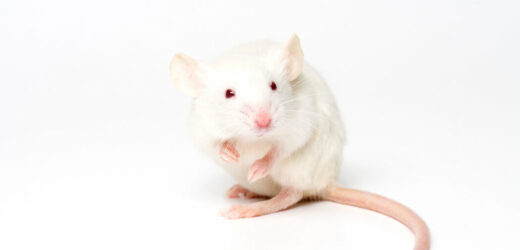For decades, male mice have been the default in scientific experiments that test new drugs or examine the connections of the brain. The reason? Female mice, which experience a four- to five-day cycle of fluctuating ovarian hormones, were thought to be too complicated. Accounting for the hormonal changes was viewed as too cumbersome and too expensive.
But the estrous cycle has little to do with how female mice behave, according to a new study that used machine-learning software to track the second-to-second behavior of animals exploring an open space. Male mice actually exhibited more erratic behavior than females did.
The study, published in the journal Current Biology on Tuesday, challenges century-old stereotypes that kept female animals out of laboratory research — and, until the 1990s, barred women from clinical trials.
The new research is “tipping all of these assumptions about sex differences and the influence of hormones on their head,” said Rebecca Shansky, a behavioral neuroscientist at Northeastern University and a co-author of the new study.
The cost of excluding females — whether human or animal — from scientific research is high. Women are almost twice as likely as men to experience severe side effects from drugs, most of which have dosages based on the initial testing done in men. Women also may not derive the same benefits from the drugs.
Women “capable of becoming pregnant,” as the federal government put it, were largely excluded from clinical trials of drugs until 1993, when a new law required researchers funded by the National Institutes of Health to include women and minority groups. In the decades since, women have made up close to half of clinical research participants, though they still lag behind in studies of certain drugs, like those used to treat cardiovascular disease and psychiatric disorders.
But a large sex gap persisted in basic science research using lab animals, studies that pave the way to medical breakthroughs. In neuroscience, according to a review published in 2010, studies of male lab animals outnumbered female ones by a factor of five.
“That disconnect between what was in the lab and what was in the clinic was of concern,” said Dr. Janine Clayton, director of the Office of Research on Women’s Health at the N.I.H. “Lots of studies were only employing male mice, with no scientific justification.”
The $33 billion funding agency aimed to close the gap in 2016 by requiring any lab that received grant funding to consider biological sex in their research. With few exceptions, researchers were required to use both males and females in studies of vertebrates and to analyze the data by sex.
That policy change led to an “uproar” among some scientists, Dr. Shansky said. “People were under the assumption that using females would make their data messy,” she said.
Although previous studies have challenged the idea that female mice are more erratic than males, the behavioral tests used were sometimes crude and gave mixed results.
The new study used a cutting-edge tool called motion sequencing, which was developed in 2015. Sophisticated cameras mapped out the animals’ movements in three dimensions, recording 30 frames per second. Then artificial intelligence identified brief — typically 300 milliseconds long — repeated behaviors, like running and grooming.
The cameras rolled as 16 male and 16 female mice explored an open space — a large bucket — for 20 minutes at a time over 15 days. The estrous cycle of the females showed a very weak effect on their behavior, the researchers found.
“You have to really kind of squeeze the data in order to see any effect of estrous,” said Dr. Sandeep Robert Datta, a neurobiologist at Harvard Medical School who is a co-author of the study and whose lab developed the motion-sequencing tool. “From a practical perspective, it’s negligible.”
Male mice exhibited more unpredictable behavior than females did. Hormones in males also fluctuate, typically changing over the course of a day. And male mice that are housed together establish a dominance hierarchy, with alpha males expressing more than 10 times as much testosterone as the submissive ones.
“So it could be that actually, for 100 years, we’ve had it exactly backwards — it’s really variation in male hormones that’s affecting behavior more greatly than female hormones,” Dr. Datta said. “That’s a hypothesis, but it’s one we’re going to test.”
The new report is the latest of several studies to make scientists question longstanding assumptions about the impacts of hormones in female lab animals.
“The fact that they did not find an effect of estrous cycle, and other researchers haven’t seen that effect either, it’s very reassuring,” said Dr. Aditi Bhargava, who studies sex differences and the biology of stress at the University of California, San Francisco.
Nevertheless, she noted, the impacts of the N.I.H.’s 2016 policy change have been slow. Although the proportion of studies that include both male and female animals has increased, the number of studies that analyze the data by sex has gone down, except in pharmacology.
“More work needs to be done,” said Dr. Clayton of the N.I.H. “It is in the best interest of the public that sex-specific results are published.”
Source: Read Full Article


